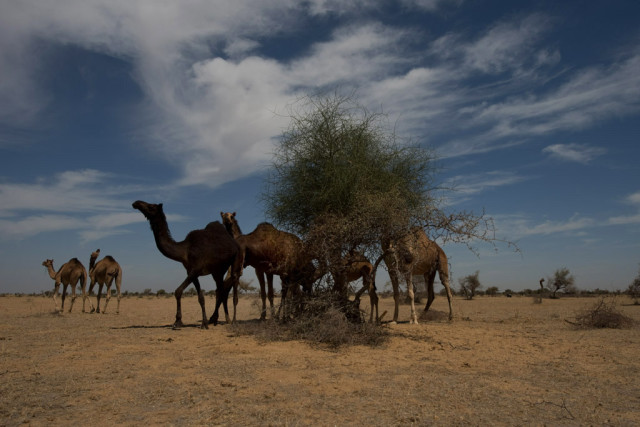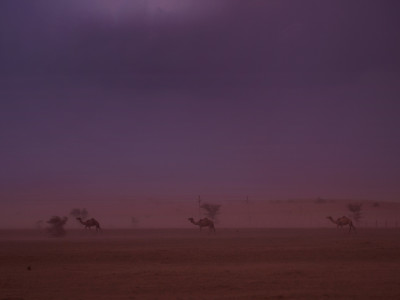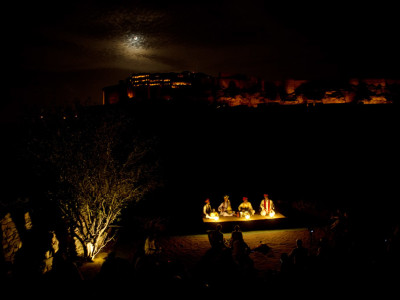Buy Sleeping Pills Zopiclone If you drive north-west from the desert town of Jaisalmer into the deep desert, you see things. You see vast swathes of arcing grasses and tall feathery khejri trees, long square kilometers of sacred groves, you see little clumps of desert cotton and tall spindly kheemp, you see brilliant agamas changing color to blend with the sand to confuse tawny eagle eyes trained on them, you see an ambling hedgehog and a hissing tongue-flicking saw-scaled viper, you see a quick lithe desert fox with springs in its legs matched by the shy high-leaping desert gazelles.
Order Generic Tramadol In these wild places, over the hum and rasp of the vehicle you are in, you also hear tinkling bells on goats and sheep, and the occasional “aa aaa aaaa” of a shepherd looking for a lost ward first, before you see them.
The Thar Desert
],[https://www.peepli.org/wp-content/uploads/2015/05/roee-1000x667.jpg,(medium)],[https://www.peepli.org/wp-content/uploads/2015/05/roee-1600x1066.jpg,(large)])
https://healthybalancebowentherapy.com/work/xomivudyn/ And these are the living desert commons: grasslands and dunes where the shepherds graze their stock while the unmindful desert scuttles around them. Diverse creatures in harmony, knowing and respecting natural boundaries.
https://lewisandweldon.com/award/bewegaga/ Boundaries set by soils which vary widely even over just a few tens of meters. If you see this land from above, the alternating stripes of dunes and vegetation resemble the pattern on a tiger. Brousse tigree, the geologists call it.
Buy 10Mg Diazepam Online Each living being inhabits particular landscapes. Some grasses grow in one soil but not in another. The phog, for example, prefers loose sandy dune-like mounds, while the sevan colonizes land with a slightly tighter, albeit still sandy soil. The dunes fall in long sweeps blowing north from Kutchh to the edge of the Punjab, with depressions between them called naans. And it is only in these dips between dunes, in the naans, that you’ll see the pretty ker trees whereas the thin kheemp grows high in thick bunches atop dunes.






The locals know these boundaries well. They know the soils and the plants and the grasses and the seasons. They know where the last lakes are, and where the deep fossil water wells live. They know the deep wells are not needed where surface water is aplenty. The land is used differently, according to its innate nature.

Xanax Online Shopping Their animals have preferences too: one grass grazed more than another. One plant shunned in favor of another. Sevan grass is universally loved. Murat is loved even more. Rich in nutrition, both sustain the animals over long distances in the heat of summer. Desert goats, it is traditionally said, do not need to drink water for a 100 days.
Order Ambien Online Without A Prescription Desert nomads too live off the commons and by the seasons, for the most part. In the spring Phog buds are a delicacy for the pastoral families, and ker fruit is a staple diet through the year: used fresh and dried. When the thin veils of rain moisten the sands, desert mushrooms fill shepherd bags. Chopped, fried with onions and chillies, this is a special monsoon treat for these nomads.
https://multilingualparenting.com/book/ruparyfyq/ The shepherds know not to tarry in one area of these grasslands for long: the vegetation gets overgrazed, the dune wells dry up. And so they move constantly, allowing the grass to grow back and the wells to refill.
https://hmccentre.com/referad/jelyfogy/ Everything has its place and use for the native desert dweller who lives by the rhythm of the land.


Watering Wastelands
2Mg Xanax Bars For Sale The government, however, sees these common lands differently. For them, these are wastelands to be “better utilized.”
According to the Wastelands Atlas of India:
https://plasticsurgeonhq.com/impla/xuzirucy/ Out of 3,42,239 sq. km the total geographic area of Rajasthan, 93,689.47 sq. km corresponding to 27.38 per cent of the total geographical area of the State is under wastelands (Figure-40, Table-52). With an area of 15,586.44 sq. km, Sands-semi-stabilised- stabilised moderate high (15- 40m) is the major wasteland category in the State.
https://hmccentre.com/referad/sagufom/ There has been a decrease to the tune of 7,764.39 sq. km in the area under wastelands as compared to the year 2003. Jaisalmer district in western Rajasthan recorded the maximum extent under wastelands with 68.34 % while, Churu district the minimum (4.24 % of its area).
Get Valium Prescription Online Vast swathes of sevan grasslands and phog-dunes are being cleared laying bare loose sandy soil. Water trickles down from the Himlayas via the Indira Gandhi Canal to ostensibly soak the desert. Fertilizers are trucked in by the bags-full to enrich the sandy soil grossly unsuitable for farming. The desert is being forced to do something it was never meant to do: produce alien, thirsty crops.
Consider this new research from the scientists in Yale:
Order Ambien Without Prescription https://naturallakeland.com/talks/qyzahonat/ A serious consequence of deforestation is extensive loss of carbon from the soil, a process regulated by subterranean microbial diversity. Drastic changes to the microbial community are expected to allow more CO2 to escape into the atmosphere, with the potential to exaggerate global warming.
https://www.chrisflannery.com/case/zixocaby/ Specifically, the researchers found that deforestation dramatically alters microbial communities in sandy soils, but has minimal effects in muddy, clay-like soils, even after extensive tree removal.
Ambien Online According to the researchers, particles in fine, clay-like soil seem to have a larger surface area to bind nutrients and water. This capacity might buffer soil microbes against the disturbance of forest removal, they said. In contrast, sandy soils have larger particles with less surface area, retaining fewer nutrients and less organic matter.
Buy Generic Valium “If you disrupt the community in a sandy soil, all of the nutrients the microbes rely on for food are leached away: they’re lost into the atmosphere, lost into rivers, lost through rain,” Crowther said.
Diazepam 5 Mg Tablet Buy Online See more here: Deforestation of sandy soils a greater threat to climate change
https://www.chrisflannery.com/case/hudexeg/ This could be an unintended consequence of deforesting a desert: the release of copious amounts of CO2 normally sequestered by microbes in the sandy soil. But more importantly, these microbes which enrich the sand are all snuffed out when you deforest from the roots, like the government has done in the desert.



Alien Water, Alien Pests
Buy 200 Mg Tramadol And there are more immediate, painful, local consequences. Nomadic shepherds depend on these grasslands for the lakhs of rupees they make from animal husbandry. The goats and sheep from the desert fly far and wide across seas to make rich roghan josh and Kashmiri biryanis. This is the prized gosht.
https://healthybalancebowentherapy.com/work/petirady/ With the grasslands taken over for agriculture, they will have to travel unreasonable distances into the desert for fodder. What then if they take to grazing more intensely on lands closer to home? The lands will be overgrazed. For vegetation to recover may take years.
https://hmccentre.com/referad/beteteb/ Water sources around these non-shifting grazing lands will get spent faster. In short, normal desert rhythms will be disrupted, lives will be altered, vibrant livelihoods might collapse.
Ambien No Script And even so, in all of this, there is no guarantee the forced farming will succeed. In fact, all factors point to the contrary. The farmers who recognize the boundaries of the desert commons and farm the right desert lands in traditional methods, using only rain, laugh at the government’s folly. “This reyt (sand) is no good for what they are trying here,” they say from ancient wisdom. But no salaried sarkari elected educated official listens to these illiterate people.

The alien water in the canals has already brought with it diseases and pests. The district now has the dubious distinction of the highest incidence of malaria anywhere in Rajasthan. And this was an area where they had never heard of the disease before the IG Canal. Nilgai and wild boar, previous unheard of in the desert are now commonly seen raiding crops.
It gets worse as you drive deeper into the desert. Even the dreams of the canal evaporate: embankments rise crumbling and canals run choked by waves of sand. Yet the government has laid bare this area too. Here, where there https://clinicadefertilidadjerez.com/steps/cosamix/ is no water — and definitely not enough to carry out the government’s grandiose plans to farm, the desert stands denuded.
What then lies in store for the desert, once the grasslands have been destroyed?
“Generalist plants will take over on the naked sands. Plants that are of no use to the goats and sheep and chinkaras and gerbils will fill in and flood the denuded desert,” say the shepherds who know the land and rue this impending fate.
If irrigation is overdone, salinity of the sands will increase, rendering the land useless for agriculture — or for anything at all.
This living desert will then truly be a wasteland.
],[https://www.peepli.org/wp-content/uploads/2015/05/t_026-1000x563.jpg,(medium)],[https://www.peepli.org/wp-content/uploads/2015/05/t_026.jpg,(large)])







[…] a related story: Wasting The Desert on […]
love it